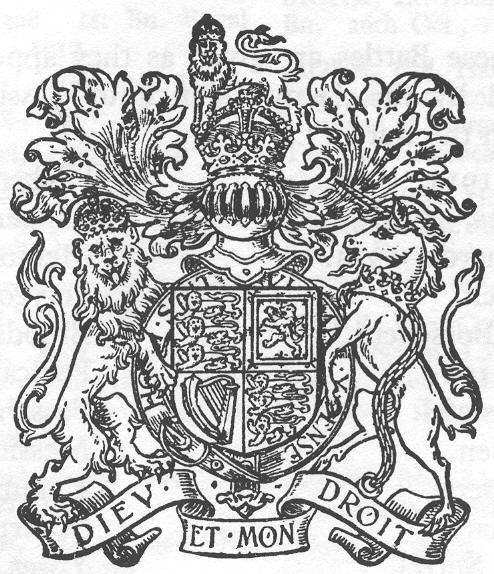

The Commonwealth War Graves Commission is responsible for maintaining cemeteries and memorials for one and three quarter million war dead in 140 countries and territories. The maintenance of the sites in am awesome task, but the building of these cemeteries and memorials was even more so.
What was the genius of this giant undertaking? It is part of the truly amazing story of the achievement of one man - Fabian Ware - who largely brought about the whole enterprise. There are many human being who have made their mark in history, but none other has left such a profound and lasting memorial to mankind's sacrifice on behalf of democracy as has this remarkable Englishman.
The Design and Construction of the Cemeteries.
So the Commission set about its task of turning muddy and bleak sites with wooden crosses into the places they are today, the actual work on building the cemeteries began in early 1919.
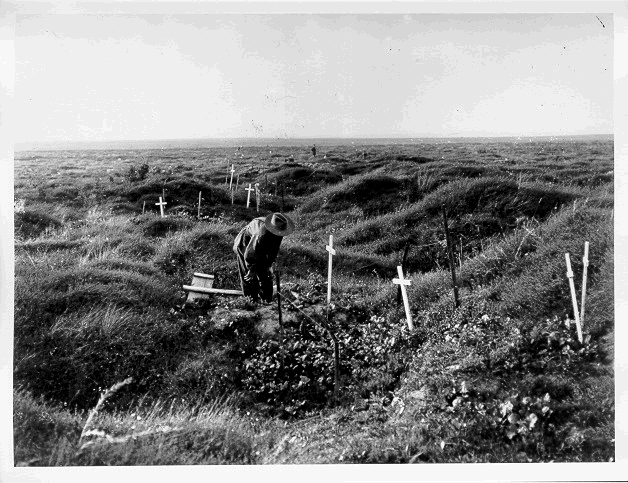
Temporary Australian graves 16 Sept 1917
One the more pressing tasks was the concentration , usually into existing burial sites, of the enormous number of bodies which were still in temporary graves, or which lay where they had died and had remained, until now unfound. The old Western Front was divided into sectors, each sector was searched repeatedly by 12 man parties. In the 34 months between Armistice and September 1921 over 200,000 bodies were recovered and buried, that ended the official search. Nevertheless , by 1937 about 38,000 more bodies had been found by accident. Still in the late 1980's bodies are being found at the rate of 20 to 30 a week.
(Visit HELL FIRE CORNER and look for related article "Disappearance and Discoveries" by Ted Smith).
The land for the cemeteries was a free gifts by the appropriate nation.
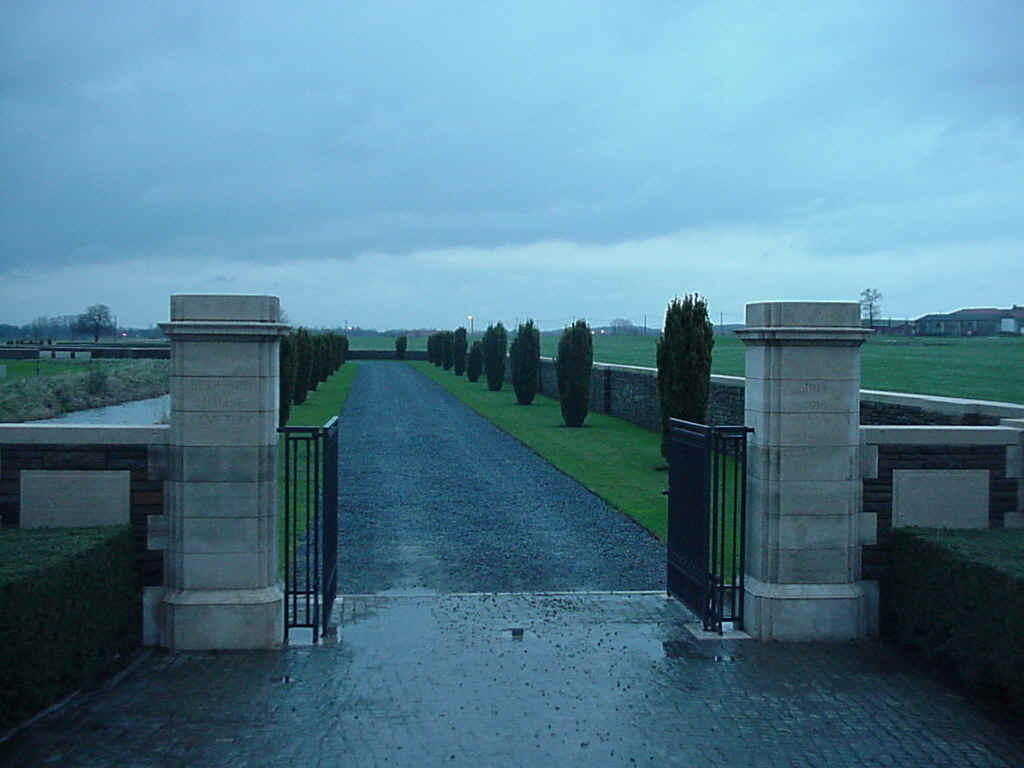
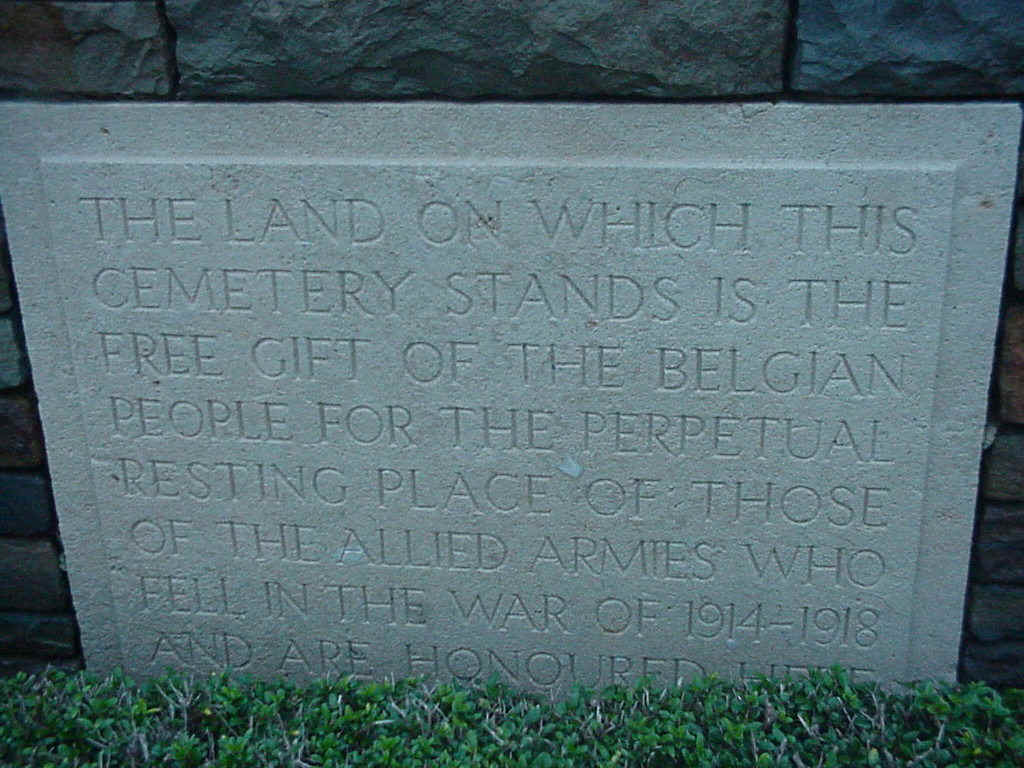
Two dramatic features of the war cemetery are:-
The
Cross of Sacrifice - designed by Bloomfield and there are four sizes (from under 15 feet to just under 30 feet in height) to suit the dimensions of the
cemetery and number of graves. The octagonal cross stands on octagonal
block, which rests on three steps. The stone is made from Portland - against
which the downward pointing bronze sword. The sword's symbolisms has many
interpretations. The minimum number of burials to qualify for a cross is
usually 40, however there are exceptions.
under 15 feet to just under 30 feet in height) to suit the dimensions of the
cemetery and number of graves. The octagonal cross stands on octagonal
block, which rests on three steps. The stone is made from Portland - against
which the downward pointing bronze sword. The sword's symbolisms has many
interpretations. The minimum number of burials to qualify for a cross is
usually 40, however there are exceptions.
Stone
of Remembrance - 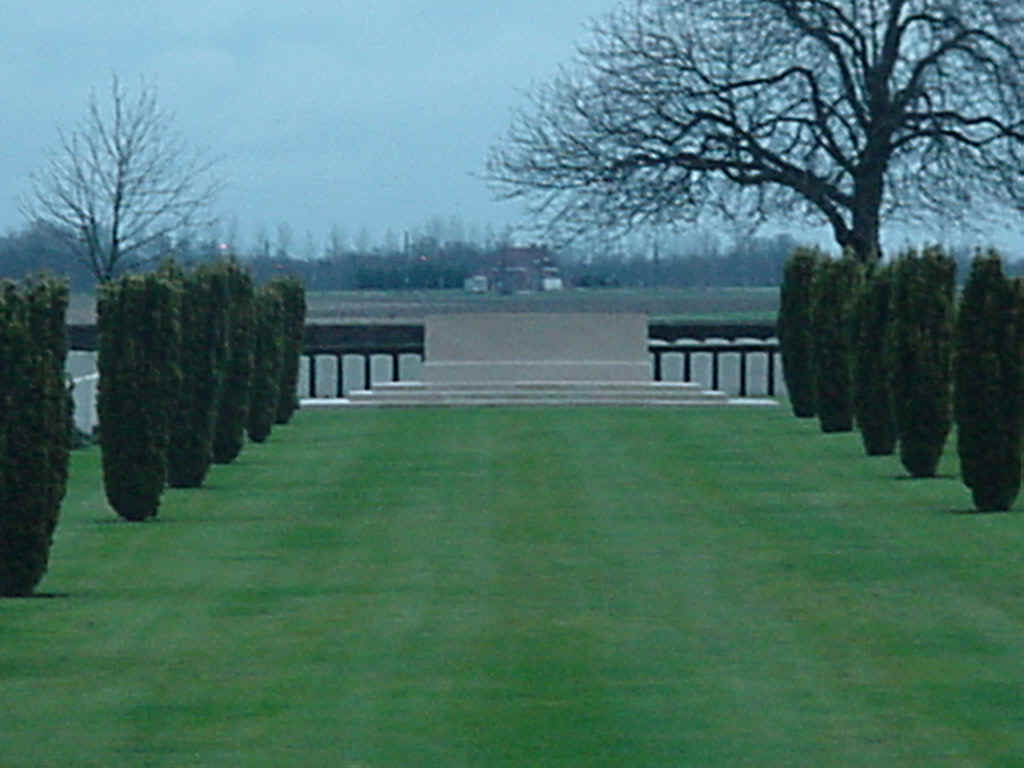 designed by Luytens and one is to found in nearly all
large
(over 400 war dead) cemeteries. It provides a handsome altar-like point.
Each stone is usually made, again of Portland, and is inscribed with, "
THEIR NAME LIVETH FOR EVERMORE". Words chosen by Kipling from the
bible (Ecclesiasticus Chap 44, Verse 14).
designed by Luytens and one is to found in nearly all
large
(over 400 war dead) cemeteries. It provides a handsome altar-like point.
Each stone is usually made, again of Portland, and is inscribed with, "
THEIR NAME LIVETH FOR EVERMORE". Words chosen by Kipling from the
bible (Ecclesiasticus Chap 44, Verse 14).
Headstones
- the Commission subscribed to the principle of individual commemoration.
Each man who died had been an individual, and wherever possible each of the
war dead was to commemorated individually. The notion of uniformity was
extended to the markers, which differed only in the details inscribed. The Commission
also decided that no distinction should be made on account of military rank,
race or creed. The standard headstone (there are some variations to
be
found) stands two feet eight inches high . Atop of the stone is an emblem,
normally the badge of the regiment. Below the emblem is the service
(regiment) number (usually omitted for officers), the serviceman's rank is
given, initials, surname with official abbreviation of any British
decorations. Immediately below this is the name of service or regiment, followed
by date of death and age. The religious emblem features beneath this. The
commission invited next of kin to check the details and to invited them to provide personal inscriptions of u to 60 letters, again there
are exceptions to this ruling.
commemoration.
Each man who died had been an individual, and wherever possible each of the
war dead was to commemorated individually. The notion of uniformity was
extended to the markers, which differed only in the details inscribed. The Commission
also decided that no distinction should be made on account of military rank,
race or creed. The standard headstone (there are some variations to
be
found) stands two feet eight inches high . Atop of the stone is an emblem,
normally the badge of the regiment. Below the emblem is the service
(regiment) number (usually omitted for officers), the serviceman's rank is
given, initials, surname with official abbreviation of any British
decorations. Immediately below this is the name of service or regiment, followed
by date of death and age. The religious emblem features beneath this. The
commission invited next of kin to check the details and to invited them to provide personal inscriptions of u to 60 letters, again there
are exceptions to this ruling.
Every year poignant reminders to the scale of the human tragedy that befell a whole generation are unearthed in the fields of France and Belgium. Approximately twenty sets of remains are found each year in what has become known as "The Harvest of Bones".
In all such cases, the Commission works closely with the relevant embassy defence attaché and ministry of defence to identify any remains found and locate next of kin.
Recently, the UK Ministry of Defence provided a forensic anthropologist who visited the Commission's mortuary in France to assist with the identification of some eight sets of remains found during the year. Her work had extremely positive results and a number of announcements will be made in the near future.
There has been a recent discovery of twenty-four sets of remains near the village of Boezinge in Belgium. The village, just north of Ieper, was until July 1917, directly faced by the German front line on the East side but in the Battle of Pilckem Ridge (31 July 1917) the British front line was pushed forward.
Unfortunately, the very nature of First World War deaths and the eighty plus year time lapse, often means no identification is possible. At 11 am on 15 September 1999, sixteen sets of the remains found at Boezinge that could only be determined as unidentified British soldiers were buried at the Commonwealth War Graves Commission Cement House Cemetery, Langemarck, Belgium.
"Cement House" was the name given by the army to a fortified farm building on the Langemarck-Boezinge road. The cemetery was started at the end of August 1917 and used until April 1918. It was greatly enlarged after the Armistice by the concentration of burials from the surrounding battlefields and now contains almost 3,000 burials of which some two-thirds are unidentified. The majority of the burials are those of officers and men who died during the Third Battle of Ypres in the Autumn of 1917.
The other sets of remains are still being held pending investigation by the Ministry of Defence